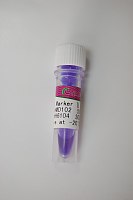Introduction of Recombinant DNA into Clostridium spp.
互联网
470
The importance of the Clostridia both in terms of their pathogenicity toward humans and their potential role in biotechnological processes has prompted many studies of the genetic manipulation of these organisms. Obviously, a prerequisite for such studies is a means of introducing recombinant DNA into individual viable cells, and the first reports of successful plasmid transformation involved use of protoplasts or L-forms (1 –4 ), or conjugal cointegrate transfer techniques (5 ,6 ). However, these methods proved tedious or time-consuming to perform, and sometimes gave inconsistent results. Some workers suggested that it was the presence of DNases produced by many species of Clostridium that contributed to the low or inconsistent transformation efficiencies obtained by these methods (7 ,8 ). Even so, protoplast transformation is still used routinely and successfully for the introduction of shuttle plasmids into Clostridium acetobutylicum (e.g., 9 ).







